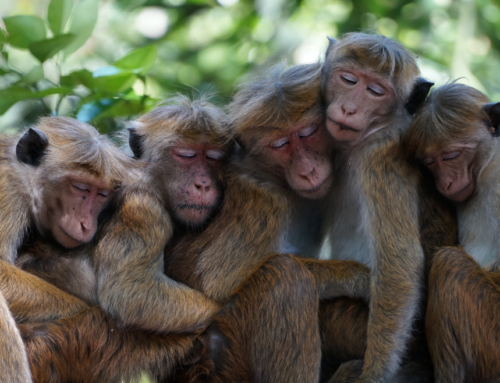Research Article: Karanth, K. K., Naughton-Treves, L., DeFries R., & Gopalaswamy, A. M. (2013). Living with wildlife and mitigating conflicts around three Indian protected areas. Environmental Management, 52(6), 1320–1332.
Blog Author: Kavya Pandey
Key Highlights:
- Human-wildlife conflict near protected areas in India is a significant issue due to economic losses, threats to human safety, and negative impacts to wildlife populations.
- A study of three protected areas (Ranthambore, Kanha, and Nagarahole National Parks) in India sheds light on the dynamics of human–wildlife conflicts and mitigation strategies.
- 398 households from 178 villages were surveyed within 10 km of India’s Ranthambore, Kanha, and Nagarahole national parks.
- 80% of households experienced crop losses due to wildlife, 13% suffered losses of livestock, and 83% engaged in mitigation efforts.
- The study found that only fencing and guard animals were effective in reducing crop losses, while no effective measures were identified to lower livestock losses.
Living close to wildlife can be a blessing or a challenge. Imagine waking up to the sight of majestic elephants or hearing the roar of a tiger in the distance. While these encounters with nature are awe-inspiring, they also bring about formidable challenges for the people living near these magnificent creatures.
A study conducted around Ranthambore, Kanha, and Nagarahole National Parks in India provides valuable insights into the dynamics of human–wildlife conflicts and the strategies employed to mitigate these challenges. The study involved surveying people living near protected areas to understand their experiences with wildlife. The researchers interviewed 398 households from 178 villages surrounding the protected areas. They asked the villagers about their encounters with wildlife, particularly instances where crops were raided or their livestock was predated upon by wild animals. The findings of the study revealed that crop raiding and livestock predation were significant issues faced by local communities. Many households reported losses to wildlife, with a staggering 80% reporting crop losses and 13% reporting livestock losses.
The researchers delved into the collected data to unravel the causes of crop damage and livestock predation. They employed diverse methods to identify the factors contributing to the vulnerability of crops to wildlife raids. The study revealed that a greater diversity of crops and more frequent harvests elevate the susceptibility to wildlife raids, as these conditions offer increased food resources for the animals. Crucially, the research emphasized that concentrating on safeguarding crops is a more practical approach than tackling the challenges associated with overseeing the grazing locations of livestock.
Despite the associated risks, livestock continue to encroach into protected areas, presenting a challenge to the enforcement of regulations. The vast and often remote nature of protected areas makes it difficult for authorities to monitor and control livestock movement effectively. Additionally, the presence of local communities reliant on grazing within these areas further complicates enforcement efforts, as restrictions on livestock grazing may be met with resistance. Furthermore, the lack of physical barriers or fencing around protected areas makes it challenging to prevent livestock from entering these spaces. These factors collectively contribute to the difficulty in enforcing regulations to prevent livestock encroachment into protected areas.
The authors also examined the attitudes of the villagers toward wildlife. They found that despite the challenges they faced, many households (83%) engaged in efforts to mitigate the conflicts. However, not all efforts were equally effective. For example, they found that only fencing and guard animals effectively reduced crop losses, whereas no efforts seemed to lower livestock losses. The study acknowledged that there were some limitations, such as possible bias in reported losses and the fact that the respondents were predominantly men. However, these findings were supported by parallel studies in the Central and Southern parts of India, indicating that human–wildlife conflict is a widespread issue in the region.
The study indicates that cultural and religious traditions in India are linked to a heightened acceptance of wildlife, resulting in a lower prevalence of lethal defense measures. This acceptance has contributed to the survival of certain large mammal species in specific regions of India. Instances of this tolerance include the respect and subsequent safeguarding of particular species like monkeys, certain ungulates, and leopards, even in the face of agricultural and livestock-related losses. The results also revealed that tolerance toward carnivores remained relatively consistent across protected areas, whereas it varied for herbivores. This implies that local communities might be more inclined to tolerate carnivores, considering them charismatic and ecologically vital, in contrast to herbivores, perceived as causing direct economic harm. Furthermore, effective mitigation measures such as fencing and guarding were identified in the study, indicating their success in reducing crop losses, possibly contributing to increased tolerance among local communities. Therefore, despite the challenges and hardships faced by these communities, the study underscores the existence of a certain degree of wildlife tolerance in India, influenced by both cultural and ecological factors.
In conclusion, the study provides valuable insights regarding the complexities of human–wildlife conflicts and the importance of considering social factors for effective resolution. By understanding the factors contributing to conflict and identifying suitable mitigation strategies, there is hope for fostering a positive relationship between humans and wildlife in and around the protected areas of India.
To access the original article, click here.
Keywords: Crop raiding, India, Livestock, predation, Mitigation, Park, People, Tolerance Wildlife.






